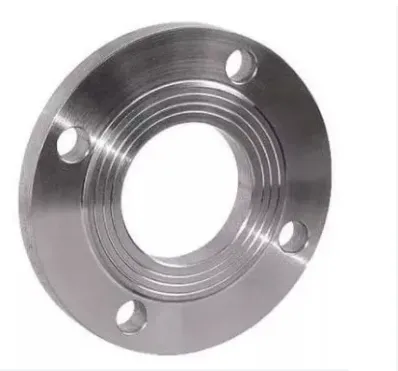-
Cangzhou Yulong Steel Co., Ltd.
-
Phone:
+86 13303177267 -
Email:
admin@ylsteelfittings.com
- English
- Arabic
- Italian
- Spanish
- Portuguese
- German
- kazakh
- Persian
- Greek
- French
- Russian
- Polish
- Thai
- Indonesian
- Vietnamese
- Zulu
- Korean
- Uzbek
- Hindi
- Serbian
- Malay
- Ukrainian
- Gujarati
- Haitian Creole
- hausa
- hawaiian
- Hebrew
- Miao
- Hungarian
- Icelandic
- igbo
- irish
- Japanese
- Javanese
- Kannada
- Khmer
- Rwandese
- Afrikaans
- Albanian
- Amharic
- Armenian
- Azerbaijani
- Basque
- Belarusian
- Bengali
- Bosnian
- Bulgarian
- Catalan
- Cebuano
- China
- China (Taiwan)
- Corsican
- Croatian
- Czech
- Danish
- Esperanto
- Estonian
- Finnish
- Frisian
- Galician
- Georgian
- Kurdish
- Kyrgyz
- Lao
- Latin
- Latvian
- Lithuanian
- Luxembourgish
- Macedonian
- Malgashi
- Malayalam
- Maltese
- Maori
- Marathi
- Mongolian
- Myanmar
- Nepali
- Norwegian
- Norwegian
- Occitan
- Pashto
- Dutch
- Punjabi
- Romanian
- Samoan
- Scottish Gaelic
- Sesotho
- Shona
- Sindhi
- Sinhala
- Slovak
- Slovenian
- Somali
- Sundanese
- Swahili
- Swedish
- Tagalog
- Tajik
- Tamil
- Tatar
- Telugu
- Turkish
- Turkmen
- Urdu
- Uighur
- Welsh
- Bantu
- Yiddish
- Yoruba

Apr . 16, 2025 14:06 Back to list
EN1092-1 Flange Selection Guide: Key Factors for Choosing the Right Pressure Rating and Material
In the complex world of industrial piping systems, the selection of the appropriate EN1092-1 flange is a crucial decision that can greatly influence the performance, safety, and lifespan of the entire setup. As a leading stainless steel flanges manufacturer, we are well-versed in the nuances of these flanges and are here to guide you through the key elements to consider when picking the right pressure rating and material.

Understanding EN 1092-1 Flange Dimensions
The EN 1092-1 flange dimensions are precisely defined by the standard, and they form the foundation for a successful flange installation. The outer diameter, bolt circle diameter, thickness, and the number and size of bolt holes all need to be carefully considered. For example, a slight deviation in the bolt hole diameter can lead to difficulties in fastening and potential leaks. These dimensions are not just numbers; they are the building blocks that ensure compatibility between different components in the piping system. At our manufacturing facility, we adhere strictly to these dimensions, using state-of-the-art machinery to achieve the highest level of precision.
Exploring Different Flange Types under EN1092-1
There are various different flange types available under the EN1092-1 standard. Weld-neck flanges, with their tapered hubs, are designed for high-pressure and high-temperature applications. They offer excellent strength and are ideal for industries such as oil and gas, where reliability is non-negotiable. Slip-on flanges, on the other hand, are more cost-effective and easier to install. They are commonly used in low-pressure systems like water supply pipelines. Blind flanges are used to close the ends of pipes, for instance, during maintenance or when a section of the pipeline needs to be isolated. Each type has its own unique characteristics, and understanding these is essential for making the right choice.
Material Selection: The Role of Stainless Steel EN1092-1 Flanges
As a stainless steel flanges manufacturer, we highly recommend stainless steel for a wide range of applications. Stainless steel offers outstanding corrosion resistance, making it suitable for environments where the flange will be exposed to moisture, chemicals, or harsh weather conditions. Whether it's in a chemical processing plant or a marine installation, stainless steel flanges can withstand the test of time. The material also provides good strength and durability, ensuring long-term performance. However, depending on the specific requirements of your project, other materials like carbon steel or alloy steel may also be considered.
Special Focus on EN 1092-1 Type 11
EN 1092-1 type 11 is a particular type of flange within the EN1092-1 standard that has its own set of advantages. This type is often used in more demanding applications due to its robust construction and high-performance capabilities. It is designed to meet specific industry standards and is known for its reliability in handling high-pressure and high-temperature situations. When considering this type of flange, it's important to understand its unique features and ensure it aligns with your project's requirements.
In conclusion, choosing the right EN1092-1 flange involves a comprehensive evaluation of EN 1092-1 flange dimensions, different flange types, material options, and special types like EN 1092-1 type 11. As a trusted stainless steel flanges manufacturer, we are committed to helping you make the best decision for your industrial piping needs.
Latest news
-
ANSI 150P SS304 SO FLANGE
NewsFeb.14,2025
-
ASTM A333GR6 STEEL PIPE
NewsJan.20,2025
-
ANSI B16.5 WELDING NECK FLANGE
NewsJan.15,2026
-
ANSI B16.5 SLIP-ON FLANGE
NewsApr.19,2024
-
SABS 1123 FLANGE
NewsJan.15,2025
-
DIN86044 PLATE FLANGE
NewsApr.19,2024
-
DIN2527 BLIND FLANGE
NewsApr.12,2024
-
JIS B2311 Butt-Welding Fittings LR/SR 45°/90° /180°Seamless/Weld
NewsApr.23,2024











